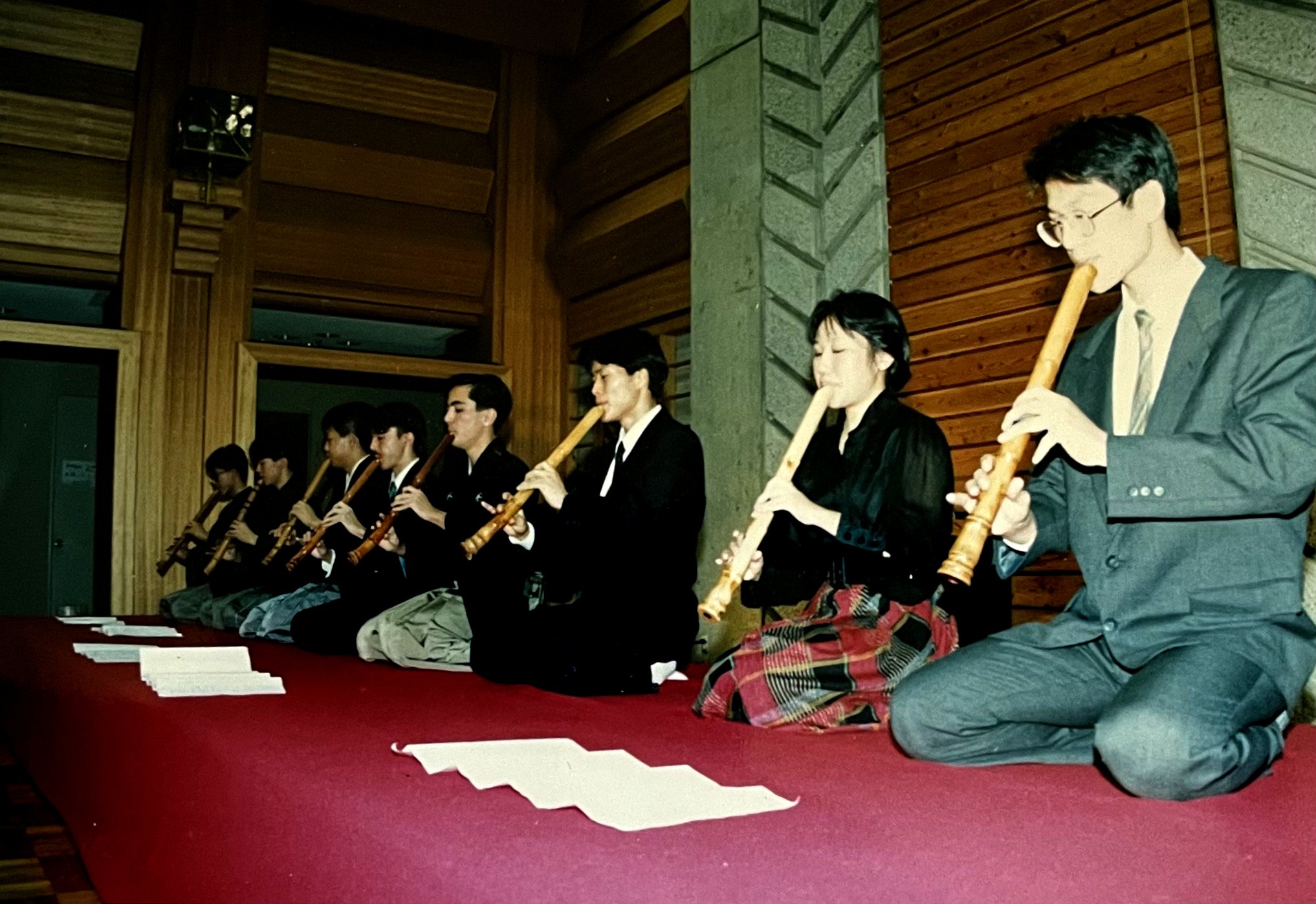On Teaching
One of the first duties assigned to me after my debut was teaching the shakuhachi club at my father’s alma mater, Keio University. The most interesting aspect of this new endeavor wasn’t the fact that I didn’t have any teaching experience, or that these college kids were all older than me, or that I hadn’t been to college myself; it was the impact teaching had on my own playing, and how quickly. Aside from a badly sprained ankle (which I earned after a six-hour teaching day where I discovered my foot had gone completely to sleep only after I tried to walk on it) it was a net positive.
Keio University Shakuhachi Group Recital c. 1990(?)
That group instilled in me a love of teaching that I have to this day. There were times though, when I thought maybe teaching wasn’t for me (something I mentioned a few weeks back). Mostly it was in the era immediately following my return from Japan. The only people who contacted me were in need of spiritual guidance more than musical instruction, and in my early twenties, I rejected the notion of a musical and spiritual nexus.
For my entire adult life, getting gigs was my sole motivation. Because there was never a manager or a booking agent, the hustle was constant. I would teach workshops at festivals and that sort of thing, but it was always secondary to playing. It’s not that I didn’t want to teach, I just didn’t seek it out, mostly because I was too busy trying to book a show, or play a show. My schedule was far too erratic to maintain a lesson plan. The pandemic changed all that.
I have to give credit to Ralph Samuelson for getting me back into teaching shakuhachi. Ralph attended Wesleyan with my father and credits my dad with introducing him to shakuhachi. He went on to study with Yamaguchi Goro, and is one of the finest living proponents of Kinko-ryu in my opinion. He delivered the exact message I needed at the time, whether he intended to or not, and I’m grateful.
Ralph reminded me not only of the beauty of this music, but the importance of remaining curious, and that teaching offers a deeper understanding of music that you don’t get from performance. I urge you to follow his YouTube channel for some really gorgeous content.
The truth is, in traditional music, transmission is the most important aspect for someone like me. As much as I enjoy playing concerts, and as important as performing is to me, those moments are fleeting; handing down the history and technique gives my ancestors the chance to live on through anyone who chooses to adopt those styles and techniques.
in Mt Kisco, NY
I hope I’m able to play out more, but I consider myself lucky to have a group of amazingly talented and inspiring students all around the world that I meet with every week thanks to the miracles of modern technology.
——————
I wrote the entire blog post above a few weeks back knowing that the time to publish it would make itself clear. And over the last few days, plans have come together for something I’ve been both excited and nervous to do. It’s long overdue.
Beginning on January 7th of the new year, I will be offering a weekly class: Introduction to Kinko-ryu Shakuhachi. Enrollment is now open. This session will last 8 weeks and take place at the beautiful Phinney Neighborhood Center in Seattle. Each class will be 55 minutes long beginning at 2pm. No experience is necessary at all, only curiosity. A minimum of 5 students will be required to run the class. Additional time will be available from 3pm - 4pm for anyone who would like to book a private lesson. Each private lesson is $60 and this option is open to all skill levels.
I have a few student-grade shakuhachi available to rent for a small fee if you aren’t ready to purchase an instrument. I also have a very good shakuhachi I’m selling for a friend should you decide to invest further.
If you have any questions about the session, the music, private lessons, or whatever else is on your chest, please leave it in the comments below, or reach out directly.
More anon,
Hanz




